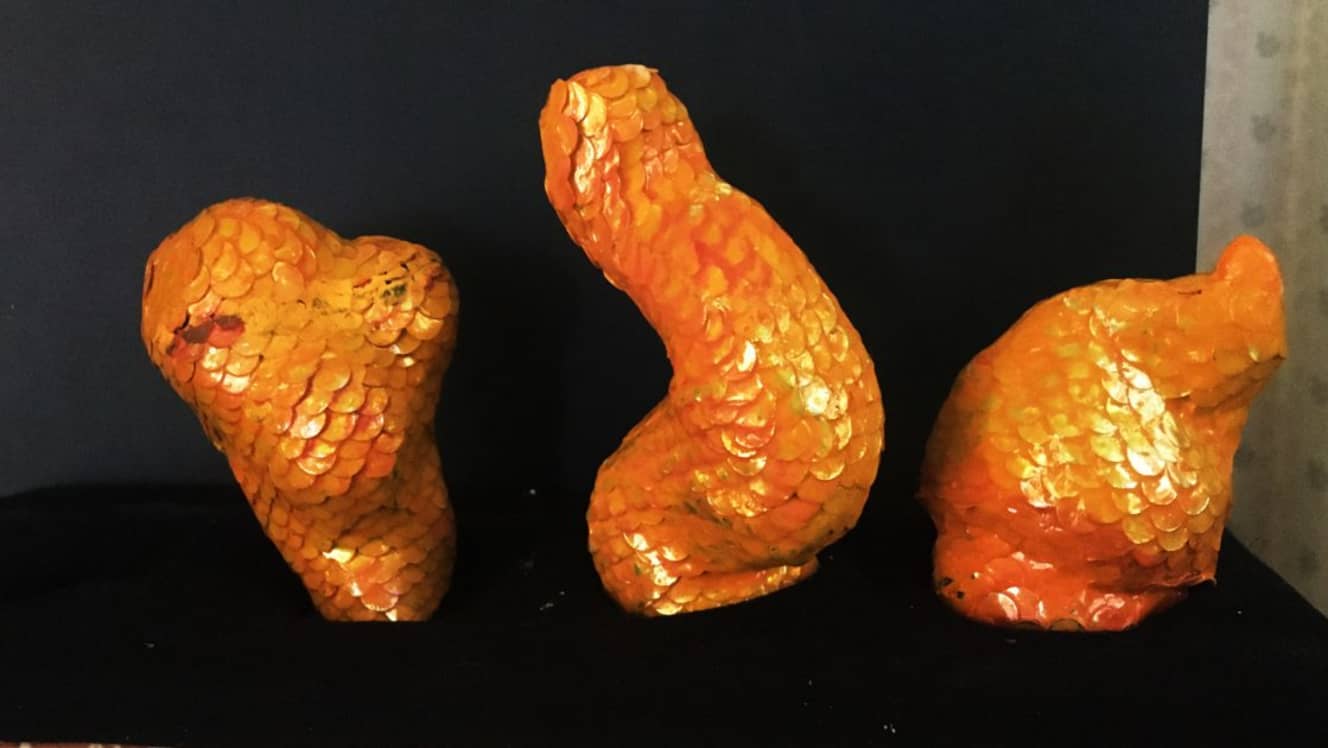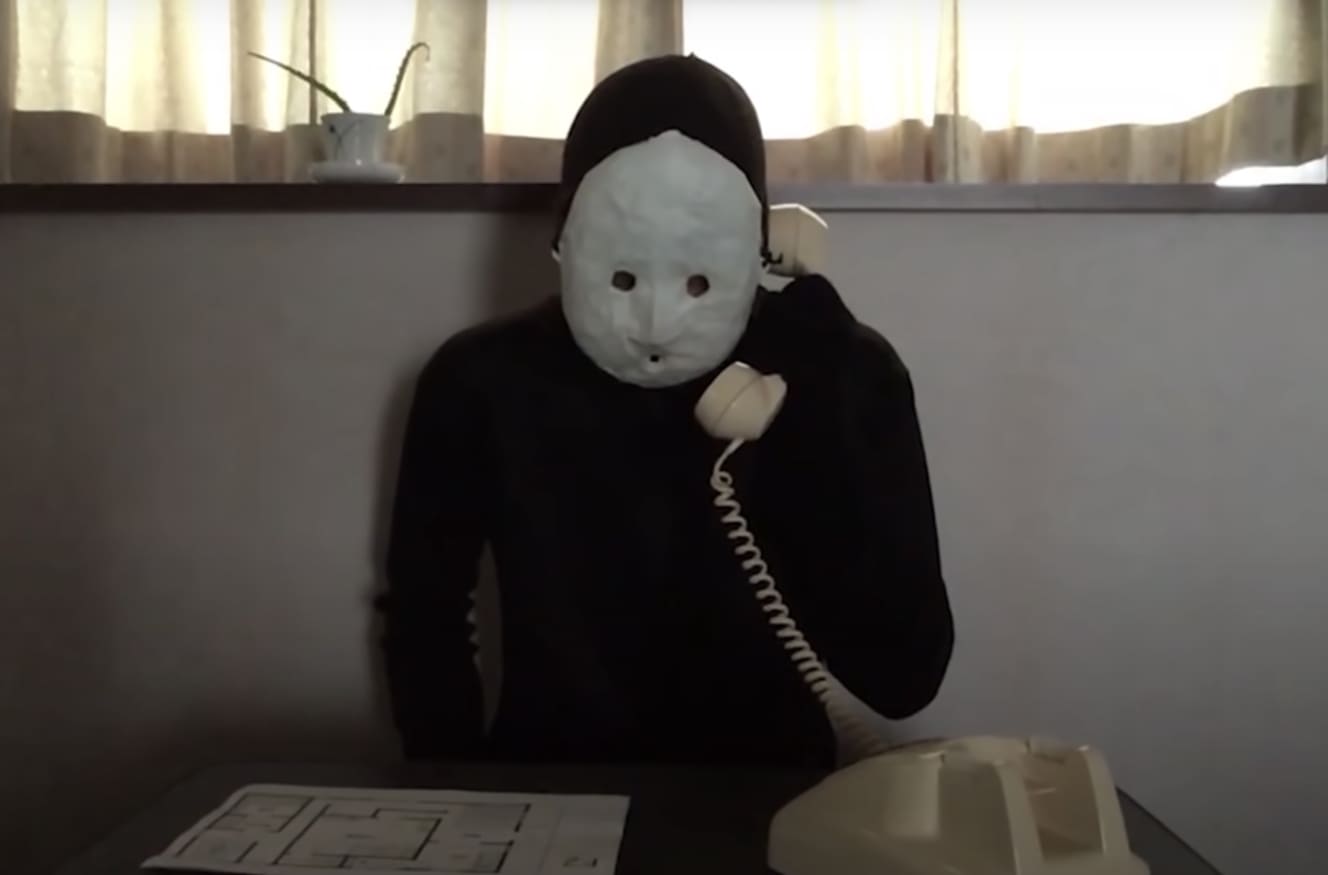Why Ameana, author of “Strange House,” appears in a video wearing “full-body tights and a mask”?
Something I wanted to be, but...
The novel “Strange House” (Asuka Shinsha), which was inspired by the online video “[Real Estate Mystery] Strange House,” which has been viewed more than 10 million times, has sold more than 300,000 copies. The story, which reveals the abominable customs of the family that lives in the house based on a strange floor plan, is scheduled to be made into a movie next year or later.
The author of this work is “Ameana,” a well-known web writer and youtuber. What was the inspiration for the hit video “Strange House”? We spoke with him about his white mask and black full-body tights, along with the secret behind his unique character using a voice changer.
–Please tell us about the culture you were fascinated with as a child, and what part of it attracted you the most.
Southern All Stars. I like the fact that tragic love, surrealism, vulgarity, and horror all coexist in the vessel called “Southern”. When I was a child, I watched Southern’s DVDs dozens of times and thought, “I want to be Mr. Kuwata (Keisuke Kuwata),” but as I grew up, I realized I was nothing like him, and this was my reaction to that.
–How did you become a YouTuber?
I originally worked as a web writer for a media outlet called “Omokoro. Omokoro” is a website that mainly distributes gag articles daily, but in 2019, I started working on YouTube (Omokoro Channel) at the same time. I myself am hardly involved in Omokoro Channel, but I thought, “If Omokoro is doing YouTube, I should start my own.
–What is the origin of the rather unusual name “Rain Hole”?
There is a web writer I admire named “Yumejinku” (a.k.a. “Dream Chin”), and when I heard that he gave his pen name by “combining two completely unrelated kanji characters,” I created it by combining two words I like (rain + hole) in the same way.
Q: You don’t see this style of full-body black tights, mask, and voice conversion anywhere else, do you?
At first, I was going to do it as a “Kuroko” costume, but the structure of a Kuroko costume is unexpectedly complex, and it seemed difficult to make the face part in particular by myself. So I decided to wear full-body black tights and a mask. I used a “mask mold” that I happened to find at Sekaido, but as a result, I ended up looking like a “Kaonashi”. I was embarrassed to do the voice in my natural voice.
What is the difference between a web writer and a youtuber as an expressive person?
I believe that what is required for a web article is an honest and unique point of view. The point of view is not the main character, so I try to write flatly and without asserting myself. On the other hand, as a YouTuber, I have to be the main character, so I try to show some character and quirks.
–Ameana’s videos often feature props of her own making, such as the strange “Torikomi Osechi Set” in “In Search of Osechi,” the spooky gifts in “Presents from Santa Claus,” and the “Creature Growing Kit” in “Water Creatures. Can you tell us about a memorable episode in props production?
The most difficult thing was the headless goldfish in the article “дефекация (goldfish breeder). First, I used a hole punch to hollow out silver origami paper into a circular shape about 5 mm in diameter to make the scales, and then attached them one by one with tweezers to a base made of clay. However, halfway through the process, I realized that the colors were not quite goldfish-like, so I rejected the two goldfish I had made over the course of two weeks and made new ones. It was a tough job.

Q: What do you keep in mind when making a video? If you were to do a collaboration project with Friday, what would you like to do?
The idea is to do material that not many others do. With Mr. Friday, I would like to do a project to take “gravure photos as if there is an invisible person in a bathing suit there.
Q: How did the video and novel “Strange House” come about?
As I was making various videos as I thought of them, I decided that I wanted to do a mystery, which I have always loved. Before “Weird House,” I had made a video called “Yatsue Mejiki,” which was a story about a tradition, but I wasn’t good enough at the time, so I left the rest to everyone’s imagination and ended it halfway. I wanted to make “Strange House” to take revenge for that.
I thought it would never be popular because it was a simple picture with only a floor plan and it was long, but I was surprised to see the number of views increase more than any other video until then. I was then approached by a publishing company, and we decided to publish it as a book.
The second half of “Strange House” describes the customs of a family in a mountain village, and is reminiscent of the world of the Showa-era mystery writer, Yokomizo Seishi. What was the inspiration for these stories?
Yes, I used the works of Yokomizo Seishi as a great reference. I have also read his novels, but the Kadokawa films “Inugamike no Ichizoku” and “Yatsukubumura” made a deep personal impression on me. The suffocating atmosphere of closed villages and homes, though exaggerated, made me think, “There must be many people in Japan who actually ended their lives in this kind of world.
Q: Where did you come up with the idea of combining “real estate” with “occult” and “horror,” which are your specialty as a writer?
In my neighborhood, there is a house with one section of the second floor protruding in one place, and every time I walked past it, I thought, “That’s a strange shape. Every time I walked by it, I thought it looked odd. I suppose there must be some reason or circumstance, but only the residents know what it is, and outsiders can only imagine. I thought there might be an element of horror in that.
Q: What do you consider to be “interesting” and “terrifying”?
I think the common denominator of both is “unknowability. For example, if a large fish falls on the side of the road, it may seem scary and a bit interesting, but once you know that “actually, a fishmonger’s truck passed by a few minutes before that and rolled down with the impact of its wheels on an empty can,” the extraordinary and exciting feeling you get when you first find the fish will fade away. So I think the essence of fun and fear is to keep maintaining the state of not knowing and to savor the unknown.
Q. How do you want people to enjoy your novel “Strange House”?
I was very happy when I saw small children reading the book, or when I saw comments like, “This is the first time I have been able to read through a book. I was very happy when I saw comments from small children who had read the book for the first time. I was determined to make an interesting book using all of my abilities at that time, so I wanted as many people as possible to read the book.
Interview and composition: Shiho Atsumi
After working as a V-drama scriptwriter, she became a writer. She has written and interviewed for women's magazines, men's magazines, weekly magazines, culture magazines, and corporate PR magazines, etc. She has written numerous articles for online media such as yahoo! author, Cosmopolitan Japan, with online, etc. She has also written for a number of magazines and magazines, including "The New York Times", "The New York Times", and "The New York Times".

